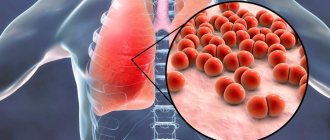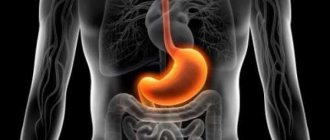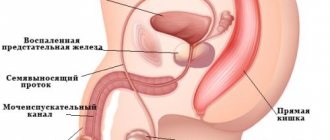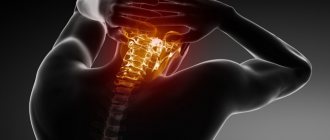Every person is familiar with the funny expression “sucks in the pit of the stomach.” It is usually used to describe feelings of fear, excitement or hunger. The “spoon” is the depression located between the sternum and the upper abdomen, just below the ribs. The epigastric region also has alternative names: among the people - the intergastrium, in medical vocabulary - the epigastrium. In this article you will learn where the epigastric region is located.
Where is the epigastric region located?
To understand where the “spoon” area is located, you need to draw an imaginary triangle, the top of which rests on the middle of the ribs, and the lower corners run along the bottom line of the ribs. Today we will take a detailed look at the features of this area, as well as the processes that occur in it.
The epigastric region: features
The epigastric or epigastric region is divided into three segments:
- Left hypochondrium area;
- Right hypochondrium area;
- Epigastric center.
Epigastric, intergastric and epigastric - different names for one area of the human body
In general, several important organs are projected in the epigastrium: most of the stomach, loops of the small intestine, the upper poles of the kidneys, the left upper hepatic lobe, the initial part of the duodenum. If a person complains of pain in the pit of the stomach, a medical professional can determine which organs may be causing such symptoms and prescribe specific tests.
Thus, discomfort or pain in the central part of the epigastric region indicates ailments affecting the liver or stomach. Pain in the left hypochondrium indicates diseases of the spleen or liver, in the right - about problems in the gallbladder.
The causes of stomach pain can be various pathological and physiological conditions.
The epigastric zone plays an important role in clinical examination, since it is in it that a high percentage of the formation and concentration of pain is noted. This is due to the close location of the organs to this area, as well as the vulnerability of the epigastrium itself. Considering the location of the epigastric zone, it is quite sensitive to various types of injuries and damage, so you need to pay special attention to the safety of the area you are looking for.
Note. Doctors insist that one cannot ignore painful sensations in the pit of the stomach, which can be either the first sign of illness or a serious symptom.
Topographic picture of the abdominal cavity
Areas of the anterior abdominal wall
The human abdomen can be divided into 9 regions using 4 lines extending from the right costal arch to the left, from the iliac rami to each other, and from the left and right sides of the navel. The result is:
- right hypochondrium;
- left hypochondrium;
- epigastrium;
- periumbilical region;
- right side zone;
- left side zone;
- left iliac part;
- right iliac part;
- suprapubic region;
- hypogastrium.
The epigastrium is located in the center of this picture and is limited by the hypochondrium, as well as the xiphoid process. The epigastric region and epigastrium are synonymous concepts in medicine. But there is another definition, according to which the epigastrium is the area of projection of the stomach onto the anterior abdominal wall. If we consider human anatomy, we get almost the same boundaries.
Pain in the epigastric region
Above, we figured out that several largest organs are projected into the epigastric region. Accordingly, discomfort and pain “in the pit of the stomach” can indicate a variety of ailments. Let's briefly look at what diseases can manifest as epigastric pain.
Epigastric region of the abdomen
Bloating due to overeating or stomach diseases, as well as functional dyspepsia (rapid filling of the stomach with a small amount eaten) are factors that cause discomfort in the epigastric region. In the epigastric zone, a person may feel pressure, burning, and complain that there is a burning sensation in the pit of the stomach. Typically, with these problems, discomfort increases gradually and subsides after a short time. If these sensations occur from time to time and are associated with food intake, and are also associated with a feeling of nausea or even vomiting, examination by a gastroenterologist cannot be postponed.
Symptoms of functional dyspepsia
In 80 percent, pain in the epigastric area is associated precisely with lesions of the digestive tract and typical diseases: gastritis (especially of autoimmune origin), pancreatitis, inflammation of the duodenum, and so on. Girdle pain with a nagging character, which is accompanied by permanent nausea, is a characteristic symptom of pancreatitis. Acute and continuous pain in the pit of the stomach, accompanied by vomiting and fever, is a signal of an inflammatory or infectious condition of the internal organs.
First aid for pancreatitis
Severe weakness, vomiting associated with dull pain in the epigastrium are associated with inflammation of the small intestine or duodenum. If a person feels stabbing, “dagger” pain in the pit of the stomach, or strong spasmodic tension in the abdominal muscles, these are characteristic manifestations of an ulcer in the stomach.
You can read more detailed information about stomach ulcers in our article.
Locations of ulcers
In this case, discomfort in the epigastric region may be associated with lung diseases (pleurisy, pneumonia, inflammation), heart attacks, chondrosis and pinched muscles, and circulatory disorders. With renal colic, nagging pains of a paroxysmal nature also appear in the intergastrointestinal tract.
Causes of pain in the pit of the stomach
In most cases, pain in the pit of the stomach is accompanied by other, more specific symptoms. Together, these symptoms can indicate serious and dangerous pathologies, therefore it is necessary to plan a trip to the clinic in the near future.
Table 1. Causes of pain in the pit of the stomach
| Which organ is affected? | Description of the problem |
| Lungs | Since the epigastric region goes around the lungs from below, a person often feels pain and discomfort in this area during bronchitis, pneumonia, tuberculosis and similar ailments. |
| Diaphragm | If pain in the epigastrium intensifies with inspiration, and also radiates to the neck and shoulders, one should suspect ailments such as diaphragmatic hernia or relaxation of the diaphragm. |
| Spleen | If this organ is damaged (for example, splenic infarction), the pain comes from the left hypochondrium and can flow through the center of the epigastrium to the neck. |
| Heart | Cardiac diseases often “hit” the epigastric region, radiating to the sternum, shoulders and even jaw. The pain is accompanied by pressure fluctuations and rapid heartbeat. |
| Liver | Spasmodic pain in the right hypochondrium indicates liver problems. |
| Appendix | If a person has an inflamed appendix, with sudden movements or turns, pain may be felt in the right hypochondrium. Its nature will not necessarily be acute - “in the pit of the stomach” appendicitis often manifests itself as dull, increasing pain. |
| Stomach | Pain in the epigastric region associated with stomach diseases can be either sharp and stabbing, or pulling, cramping, spasmodic. Pain is often accompanied by tension in the abdominal muscles, nausea, vomiting, and bowel movements. |
| Pancreas | The nature of the pain is similar to that accompanying gastric ailments: it can be shingles, sharp or aching. |
| Intestines | “In the pit of the stomach” the pain is strong and sharp, often the pain is accompanied by vomiting, which does not bring relief. |
| Gallbladder | Acute cramping pain radiates to the center of the epigastrium and radiates to the neck and shoulder blades. The pain intensifies with deep breaths. |
| Kidneys | Kidney diseases have the following symptoms: pain is localized in the center of the epigastric region, and when moving it radiates to the perineum and lower back. |
Regular pain in the epigastric region is a reason to immediately contact a medical facility
The local therapist will prescribe the necessary examinations and also offer symptomatic treatment for the first time. Once the diagnosis is made, therapy will be prescribed more precisely. Usually a complex type of treatment is prescribed, which restores not only the functioning of the gastrointestinal tract, but also the immune system.
Etiology
Pain in the epigastric region is caused by various ailments that affect many internal organs. Among the ailments, the most common causes of this symptom are:
- a wide range of diseases of the stomach, duodenum, esophagus and other gastrointestinal organs. In particular, chronic gastritis of various origins, hiatal hernia, pancreatitis and pyelonephritis;
- acute course of appendicitis. At the beginning of development, aching pain is noted in the navel area, then in the epigastrium, after which it spreads to the entire right side of the abdomen;
- myocardial infarction - can often be accompanied by painful spasms in this place. The pain is expressed quite acutely, and is also accompanied by a decrease in blood pressure and an increase in heart rate;
- pleurisy and pneumonia - with such disorders, pain in the upper abdomen sharply intensifies with strong coughing and inhalation, often the pain can radiate to the back;
- acute duodenitis – a slight pain syndrome appears, the sensitivity of this area increases, and signs of intoxication of the body are also observed;
- pyloroduodenal stenosis - characterized by the fact that pain is expressed after eating, accompanied by heartburn and frequent vomiting;
- various infectious disorders that cause sudden abdominal pain;
- hemorrhagic syndrome;
- typhus – differs in that it involves the solar plexus in the pathological process, thereby causing intense pain in this area.
Causes of pain in the epigastric region
But not only diseases can become a factor in the manifestation of unpleasant sensations in the epigastric region. Often the source of pain can be damage to other internal organs, in particular:
- stomach – there are severe and paroxysmal pains, often accompanied by other symptoms. Can occur both after meals and on an empty stomach;
- heart - in addition to the appearance of painful spasms in the epigastric region, pain spreads to the right shoulder and lower jaw;
- lungs - the intensity of pain varies depending on the breathing rate;
- pancreas - provokes constant and colicky pain, which can radiate to the back or left shoulder;
- intestines - almost always causes pain in the epigastrium, which is accompanied by many other signs;
- spleen – causes intense pain, often spreading along the left side of the body and neck;
- gallbladder - diseases associated with this organ often cause unbearable pain in the epigastric region, pain radiating to the back is often observed;
- kidney - sharp pain, spreading to the perineum and lower back;
- diaphragm - spasms in this area are greatly intensified during food consumption or deep breaths.
Another reason why epigastric pain may occur is oncology of one of the gastrointestinal organs or cancer metastasis.
Sucks in the pit of the stomach
When faced with danger, acute sensations, fear or getting into a nervous situation, a person may feel discomfort in the epigastric region, which cannot be called painful. They say about it like this: “It sucks in the pit of your stomach.” The fact is that when the nervous system is excited, the motor activity of the stomach also increases. The second situation in which you can experience this sensation is hunger or active secretion of gastric secretions. What is the sucking feeling in the epigastric region connected with: nerves or the work of the stomach? Let's clarify this issue.
The feeling of something sucking in the pit of your stomach is, in fact, absolutely physiological
You can start sucking in the pit of your stomach a couple of hours after a meal. This feeling is encountered more often by individuals with a choleric character or simply by impressionable people with an active, agile psyche. There is even an official name for the desired sensation: the motor migratory complex.
MMC is the contractile activity of the stomach, which is repeated cyclically in the interdigestive time period. Typically, the motor migratory complex occurs during a period when the digestive tract is at rest. As soon as a person has eaten, the MMC is interrupted, as the activity of the organ changes. Why does the body need MMC? In the process, food debris, mucus, bacteria, and gastric secretions migrate through the digestive tract.
The migrating motor complex in healthy people is characterized by constancy of characteristics and consists of cyclically repeating phases
The contractile motor cycle lasts from one and a half to two hours, most of this time occurs in the resting phase (first phase). Muscle contractions (second phase) occur later, increase gradually, reaching their greatest intensity in the third phase. It lasts no more than five to six minutes and is a maximum outbreak of gastrointestinal motility activity, which doctors call the motor migratory complex. This is what people perceive as sucking in the pit of the stomach.
When the third phase ends, a short passage begins when motor activity decreases. A decrease in motility is also associated with diet - the more hungry a person is, the lower the contractile activity of the gastrointestinal tract. So, after a day of fasting, activity drops by 70 percent.
Structure of the human gastrointestinal tract
Important point! The sucking sensation in the epigastric region should not be confused with hunger pain in the stomach. This is a slight feeling of emptiness, not pain. Hunger pains are the result of prolonged fasting, more than three to four days. Sucking in the epigastrium begins much earlier - from several hours to a day, depending on the speed of metabolism in the human body.
Most often, the stomach is in good shape in young, active, healthy people. Also, gastric tone and the feeling of “sucking in the pit of the stomach” are familiar to those who have low blood sugar. If there is a sucking sensation in the pit of the stomach at night, then we may be talking about a hormonal imbalance. Thus, discomfort in the epigastric region is often caused by a lack of cortisol, leptin, ghrelin or neuropeptides.
Why does it suck in the pit of the stomach?
Often sucks in the pit of the stomach several hours after eating
Table 2. Why does it suck “in the pit of the stomach”?
| Time period, circumstances | Possible reason |
| No more than five minutes, goes away on its own | The stomach muscles move; in other words, the organ simply stretches. |
| More than ten minutes, not associated with hunger | State of stress, panic. You shouldn’t immediately seize this feeling, you need to switch to something, drink mint tea, lie down. |
| Immediately after a meal or within a short time after a meal | Reduced blood sugar levels. Mistaking the feeling of thirst for a feeling of hunger (the centers of saturation with food and liquid are located nearby, so a person often feels hungry when he is actually thirsty). |
| Regularly throughout the day | Stress, fatigue, sleep disturbances, too active work schedule, inability to fully restore the body’s strength. |
| After a meal that includes fatty, hot, spicy foods | Stress, fatigue, sleep disturbances, too active work schedule, inability to fully restore the body’s strength. |
| After a meal that includes fatty, hot, spicy foods | Pancreatic reaction. As a rule, a sucking sensation in the epigastrium is accompanied by belching and heartburn. |
| 6-7 hours after eating, accompanied by increasing pain | Gastritis, peptic ulcer. It is necessary to visit a gastroenterologist and examine the stomach. |
Proper nutrition is the key to health
Where is the epigastrium located?
The epigastric region can hurt due to a variety of factors, therefore, for a more accurate diagnosis, it is recommended to carry out an examination. First of all, you should pay attention to diseases that are associated with the activity of the digestive system. For example, gastritis, which is autoimmune in nature, will be accompanied not only by pain, but also by heartburn and nausea. Based on the characteristics presented, such diseases are classified.
Pain in the epigastric region can occur due to inflammatory diseases associated with the pancreas. In this case, the sensations are characterized by nausea and vomiting, as well as shingles. In the vast majority of cases, symptoms begin to appear after eating food, even in small quantities. If the head of the organ is affected, the pain changes localization to the right side of the abdomen.
In the case when the epigastric region hurts due to the development of infectious and inflammatory processes, the features of the condition are as follows:
- the sensations are characterized by an acute nature, which can be accompanied by a variety of symptoms - from fever to nausea or vomiting;
- a burning sensation occurs when a hiatal hernia forms. In this case, experts additionally identify bloating;
- inflammation of the appendix is accompanied not only by pain, but also by tension of the entire muscular corset in the left lower abdomen.
Unpleasant sensations may be accompanied by inflammatory patterns in the duodenum area. They are accompanied by nausea, vomiting, and excessive weakness.
These sensations may be present in kidney disease or an inflammatory condition. In addition, pleurisy and some other diseases can affect such sensations. In general, experts point to significant variability in symptoms, but with timely diagnosis, all of them are quickly and successfully eliminated.
To independently determine in which zone the discomfort is felt, you need to learn to find the epigastric zone. To facilitate the task, a triangle is visually drawn on the human body with its base at the navel line under the ribs and a closed apex in the area of the ribs. The place that this imaginary triangle occupied is considered the epigastric zone, otherwise called the epigastric zone.
In the epigastric zone there are:
- Stomach.
- Left side of the liver.
- Part of the gallbladder.
- Pancreas.
duodenum.
The largest collection of nerve endings is located in this place, it is called the solar plexus.
Painful manifestations in this place are very diverse, reflected in other areas of the abdomen, back, and indicate a wide variety of ailments.
Pain in the stomach area, i.e.
in the epigastric (or epigastric) region, located under the xiphoid process and the corresponding projection of the stomach onto the anterior wall of the peritoneum, are a symptom of a wide variety of diseases and conditions, including diseases of the stomach, heart, lungs, liver, pleura, spleen, duodenum intestines, bile ducts, pancreas; they can also be one of the signs of vegetative-vascular disorders and neurological diseases.
Signs that characterize pain are:
- Her character;
- Intensity level;
- Localization;
- Cause of occurrence;
- Irradiation of pain (the degree of its prevalence from the source of occurrence);
- Duration;
- Frequency of occurrence;
- Association with additional factors (for example, food intake or defecation, changes in body position, physical activity, etc.);
- the effect of various medications on it;
- The emotional effect it causes (aching, cutting, stabbing, pressing, throbbing, burning, piercing pain, etc.).
The intensity of pain can vary from mild pain to the development of a state of pain shock (for example, with perforation of an ulcer). However, the intensity of pain cannot be a criterion for assessing the nature of the disease, since this factor is purely individual and is determined by the personal perception of pain (pain threshold).
The nature of the pain may indicate not only a specific disease, but also allows us to identify possible complications. For example, people suffering from chronic gastritis and having reduced secretory function, in most cases complain of a feeling of heaviness and fullness in the epigastric region.
A feeling of fullness is also one of the characteristic signs of pyloric stenosis. In cases where cholecystitis, pancreatitis or colitis is associated with the disease, intense pain may occur.
Duodenal ulcers and chronic duodenitis in the acute stage are accompanied by cutting, cramping, stabbing and sucking pains. Extremely intense pain, which can also result in painful shock, occurs when ulcers perforate.
In certain diseases, there is a clear connection between the occurrence of pain in the epigastric region and food intake (especially if the food is spicy, coarse, fatty, sour). The pain can be early or late.
Early ones usually occur after eating fairly rough foods (for example, marinades, plant foods, brown bread), late ones - after eating food characterized by a high degree of alkaline buffering (for example, boiled meat, dairy products).
In some cases (with duodenitis or duodenal ulcer), pain may occur at night or on an empty stomach. As a rule, the patient's condition is facilitated by eating soft and liquid food or soda.
Difficulties in tracing the cause-and-effect relationship between the occurrence of pain and any other factors arise in cases where the patient develops a malignant tumor in the stomach.
The main causes of pain in the epigastric region are the following diseases: gastritis, polyps in the stomach, peptic ulcer (both stomach and duodenum), functional dyspepsia, gastritis, duodenitis, gastroesophageal reflux disease, malignant tumor in the stomach.
In addition, they can be triggered by the following factors:
- binge eating;
- increased abdominal muscle tone;
- constipation;
- indigestion;
- increased physical activity;
- diseases caused by a viral or bacterial infection (this pathology is usually called gastroenteritis or “intestinal flu”;
- in this case, pain in the stomach area is usually accompanied by vomiting, nausea, abdominal muscle spasms, diarrhea);
- food poisoning (manifested by abdominal pain and diarrhea);
- appendicitis (pain is constant and accompanied by tension in the lower abdomen);
- diseases of the reproductive system;
- diseases of the urinary system;
- damage to the cardiovascular system;
- diaphragm spasm;
- diseases of the gastrointestinal tract;
- food allergies (for example, those resulting from lactose intolerance after eating milk and milk-based products);
- psychogenic factor (stomach pain caused by this factor is most often observed in children, this syndrome is often called “school phobia”, it is characterized by the fact that the pain is of emotional origin and is caused by fear, quarrels, conflicts in the family, etc.);
- stressful situations;
- pregnancy (usually pain in the epigastric region that occurs in women during pregnancy is associated with changes and instability of their hormonal levels, increased sensitivity to infections and allergenic substances);
- smoking;
- excessive consumption of alcoholic beverages;
- poisoning with heavy metals, mercury preparations, acids, alkalis.
Pain that accompanies diseases of the gastrointestinal tract occurs as a result of impaired motor skills and is a consequence of spasm or stretching. This creates ideal conditions for the occurrence of pain: the intensity of tonic contractions of the smooth muscle fibers of the stomach walls increases, and the evacuation of its contents slows down significantly.
Inflammatory diseases of the stomach and duodenum are characterized by the occurrence of pain even due to minor changes in the motor function of these organs, to which the body of a healthy person would not react in any way.
Pain in the stomach area, resulting from spasm or stretching of the walls of the duodenum and stomach, as well as ischemic disease affecting their mucosa, is called visceral pain. They are constant dull radiating pains that occur along the midline of the abdomen.
Pain in the epigastric region is a symptom that cannot be ignored. Before eliminating it, however, a thorough preliminary diagnosis and identification of the exact cause that caused it is required, since, as noted earlier, pain in the stomach can be the result of a fairly large number of different diseases.
Note: This information is provided for informational purposes only and is not intended as a guide to action or a substitute for professional medical advice. Do not use this information for self-diagnosis or treatment. If you have any questions about your health or health concerns, always consult your physician.
Summarizing
A sucking, uncomfortable or even painful feeling in the epigastric region is a symptom that almost every person has encountered. It is important to be able to distinguish when this trouble is associated with external factors or mild hunger. Regular pain in the pit of the stomach is a sign that is foolish to ignore. Important organs are projected into this area, disorders in which can seriously disrupt the quality of life and lead to long-term treatment.
Visit a qualified doctor
We recommend not postponing a visit to the doctor if the epigastric region reminds you of itself too often. It is possible that no pathology will be detected, but a specialist will help you adjust your diet and lifestyle in general so that discomfort bothers you as little as possible.
Classification
In gastroenterology, there is a clear division into the expression of pain in the epigastric region, which differs depending on what factor caused the appearance of such an unpleasant sensation. Thus, pain is divided into:
- hunger pains can be aching and severe. It goes away after eating food, and sometimes a few sips of tea are enough;
- constant - its occurrence is associated with irritation of nerve endings in the mucous and submucosal layer. Chronic pain syndrome is often observed during inflammation;
- periodic – often aching in nature and caused by the secretion of large amounts of gastric contents;
- contraction-like cutting.
In addition, pain in the epigastric region can be seasonal and worsen in spring or autumn.
Depending on food consumption, this symptom is divided into:
- pain in the epigastrium after eating - often observed after eating junk food, fast food, fried or salty foods, as well as low-quality food. In order to get rid of spasms, a person needs to take painkillers;
- pain that occurs on an empty stomach is eliminated after eating, and for this it is not at all necessary to eat to the full; in some situations it is enough to simply have a small snack. Quite rarely it can go away after drinking liquid.
Is this a serious disease?
Pain in the epigastric region is not always a manifestation of a serious illness. However, you should contact your doctor immediately if you experience symptoms such as:
- labored breathing,
- pain in the heart area,
- bloating,
- blood in the stool along with vomiting,
- fever above 38,
- abdominal pain intensifies and/or moves to the lower right region.
There are many reasons that can cause pain in the epigastric region. Diverticulitis, lactose intolerance and GERD can cause this symptom. Another possible cause of discomfort is inflammatory diseases and even cancer, which affects the functioning of the stomach and other digestive organs. In rare cases, heart disease also leads to pain in the epigastric region. Overeating, consumption of spicy and fatty foods, and alcohol are well-known factors that lead to the epigastric region becoming painful both at rest and during examination. Drinking coffee too often leads to stomach upset. This drink also interferes with GABA metabolic activity, which is very important in calming the gastrointestinal (GI) tract.
Some other diseases that cause pain:
- Gastritis is a condition in which the lining of the stomach becomes inflamed and sensitive.
- Peptic ulcers are open sores or ulcers in the lining of the stomach and small intestine.
- Dyspepsia or upset stomach.
- inflammation of the esophagus, also known as esophagitis;
- hiatal hernia;
- pancreatitis;
- diverticulitis;
- stomach cancer;
- oncological processes in the pancreas;
- hepatitis;
- chronic cough;
- stretching of the abdominal muscles;
- abdominal aortic aneurysm;
- side effect from taking medications.
With some forms of urethritis and other inflammatory diseases of the pelvic organs, pain in the epigastric region sometimes occurs, which is usually accompanied by fever and nausea.
Symptoms
Pain in the epigastric region can be the only symptom or be accompanied by other signs. It is necessary to seek help from specialists as soon as possible if, in addition to this symptom, the following clinical picture occurs:
- violation of respiratory function and the process of swallowing food;
- discomfort in the heart area;
- an increase in temperature above thirty-eight degrees;
- detection of blood impurities in feces and vomit;
- increase in abdominal size;
- increased pain, spreading to the back or right side.
Symptoms accompanying pain in the epigastric region
These are the main signs that may accompany hunger pain or the occurrence of cramps on an empty stomach in the epigastric region, and also indicate during diagnosis diseases of the gastrointestinal tract, heart and other internal organs.
Diagnosis and treatment
If a person is bothered by pain in the epigastrium, then it is necessary to seek help from specialists such as:
- therapist;
- surgeon;
- neurologist;
- gastroenterologist;
- gynecologist;
- nephrologist;
- pulmonologist
After reviewing the medical history and life history, the doctor sends the patient, provided that he has complaints of pain and discomfort in the epigastric region, for an instrumental examination. This is necessary to establish the disease that caused such unpleasant symptoms.
Doctors are required to prescribe:
- general and biochemical analysis of blood and urine;
- microscopic examination of feces;
- breath tests to detect the bacteria Helicobacter pylori in the body;
- bacterial culture for antibodies;
- Ultrasound of the abdominal organs;
- FEGDS is an endoscopic procedure for studying the mucous membrane of the gastrointestinal tract;
- radiography - with or without contrast;
- biopsy - for histological studies and detection of oncology.
Based on the results obtained during diagnosis, specialists confirm the presence of a particular gastrointestinal disease.
Doctors of different specializations can identify the cause of pain. But if the patient regularly experiences pain in the epigastric region after eating, a comprehensive examination is prescribed.
This is done in order to identify the true cause of the discomfort and begin treatment of the pathology.
Before conducting an examination, the doctor prescribes a series of tests, including checking blood, urine, and feces.
What else does the doctor prescribe:
- Ultrasound of the abdomen.
- Various tests.
- X-ray of internal organs.
- Other procedures as prescribed by the doctor.
After all the tests and research results are collected, the doctor can make a diagnosis. To make sure of the diagnosis, the doctor must exclude the possibility of developing another disease that may occur with the same symptoms.
The doctor prescribes treatment based on the diagnosis. In the usual form of the disease, this can be outpatient treatment; pills, diet, and other precautions are prescribed.
If the patient is at a serious stage, hospitalization may be recommended.
If heaviness appears in the epigastrium, you should not wait until it goes away on its own; it is better to consult a specialist and identify the causes of pain. Be sure to undergo a full examination and begin treatment in a timely manner.
How quickly the discomfort in the epigastric region goes away depends on how effective the treatment is. The disease takes a lot of energy from a person, so you should not neglect your health.
Diagnostic tests
Various studies are carried out to diagnose the underlying causes. The use of modern technology plays an important role in achieving excellent results in detecting the affected area of the body. Below are the most common methods:
- The erythrocyte sedimentation rate (ESR) is an inexpensive and simple test that is used to detect inflammation in the body.
- A urine test is performed to detect urinary tract infections and other underlying conditions.
- A biochemical blood test is performed to determine liver function and the content of pancreatic enzymes.
- An endoscopy is usually performed to evaluate problems related to the stomach and esophagus. This test also provides the ability to perform a biopsy, which detects abnormalities such as inflammation, ulcers and tumors.
- X-rays and ultrasounds of the abdomen are done to check the abdominal organs (stomach, kidneys, intestines, bladder, liver and pancreas) to identify obstructions or other pathologies.
- MRI and CT scans are very helpful in uncovering the root cause of pain.
- An ECG is performed in cases where epigastric pain is not associated with gastrointestinal diseases. This test helps in diagnosing heart attacks.
Some characteristics of pain syndrome
With irritable bowel syndrome, pain lasts quite a long time and is associated with bloating and changes in stool frequency or consistency. The examination is usually painless or may cause mild pain or a stretching sensation.
Peptic ulcer disease is characterized by acute or chronic gnawing or burning pain, especially if dietary recommendations are not followed. The pain is usually worse at night.
Pancreatitis is accompanied by acute pain that radiates to the back. This is usually accompanied by vomiting. When bending forward, the pain decreases. Signs of this disease vary but include jaundice, tachycardia, abdominal muscle rigidity, tenderness and discoloration of the skin around the navel or sides of the abdomen.
Peritonitis is acute pain with signs of shock and tension. This may get worse when you cough. The abdomen may be plank-shaped.
Gastrointestinal obstruction is accompanied by acute colicky pain. Vomiting brings relief. Accompanied by distension and auscultation of bowel sounds.
For diseases of the gallbladder, acute constant pain with vomiting, fever, local soreness and rigidity are diagnosed. In some cases, it is possible to palpate the gallbladder.
Traditional medicine
If, after examination, uncomplicated gastritis, bulbitis or duodenitis is diagnosed, then treatment with folk remedies is possible. Herbal remedies that relieve inflammation and help fight infection are preferred. You can use the following recipes:
- St. John's wort infusion. This herb has analgesic, anti-inflammatory and antimicrobial effects. To prepare the infusion, you will need to pour 1 tablespoon of dry St. John's wort into 250 ml of boiling water. Then let the liquid brew for 2-3 hours. Take 75 ml before meals 2-3 times a day for a week.
- Chamomile decoction. Chamomile has an antiseptic, anti-inflammatory, choleretic and astringent effect. It is often used for gastrointestinal pathologies to normalize digestion and eliminate pain. To prepare the medicine, you will need to take 3 tablespoons of chamomile, add 300 ml of liquid, bring to a boil and boil for 30 minutes. The decoction is consumed 3-4 times a day, 50 ml.
Before using traditional medicine recipes, you should consult your doctor. When treating diseases of the gastrointestinal tract, it is necessary to correctly combine folk and pharmacy remedies.











